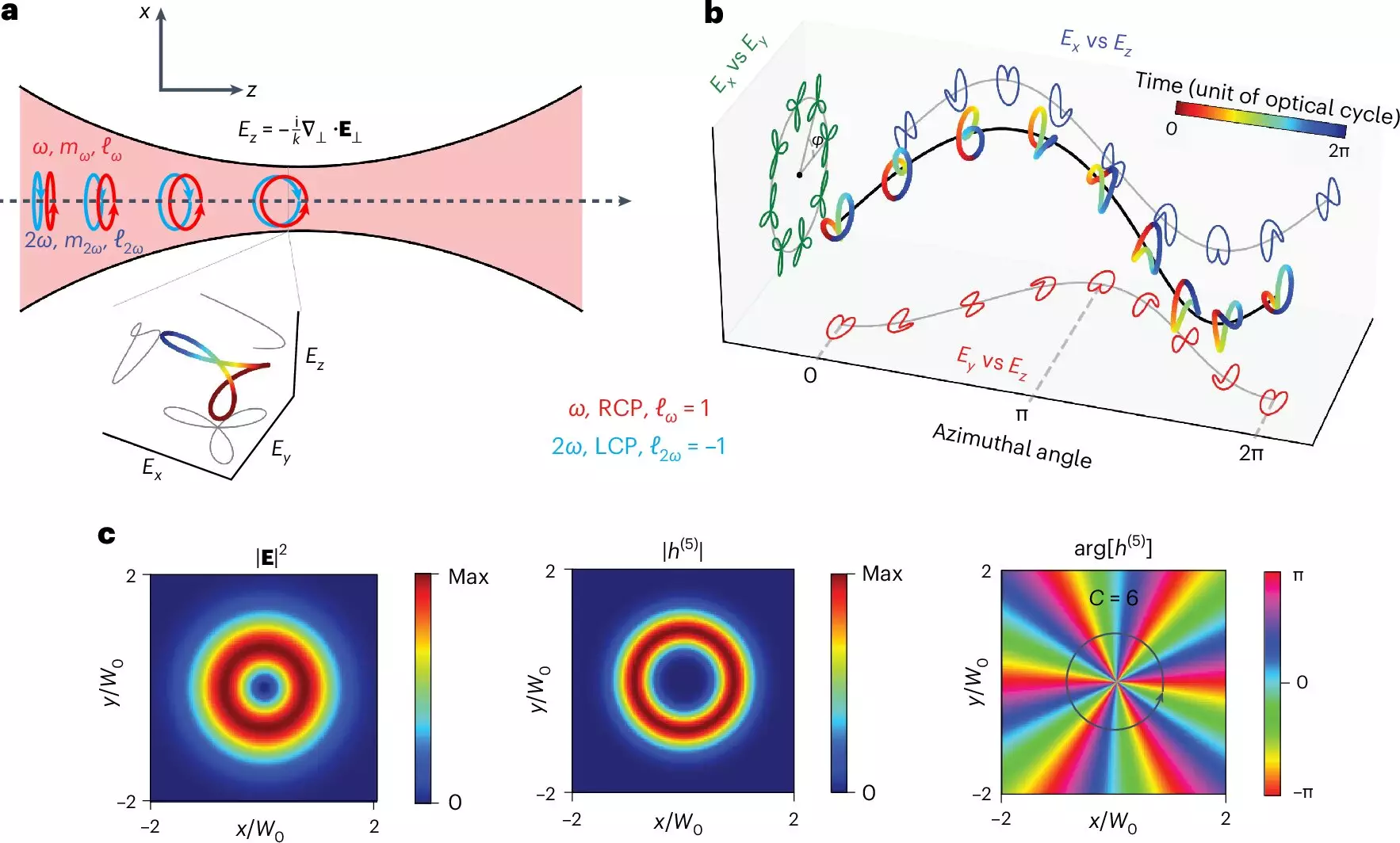Recent advancements in the understanding and measurement of chirality have been unleashed through an innovative approach involving a newly structured form of light. Researchers from King’s College London and the Max Born Institute have unveiled this transformative technique, which promises to significantly enhance the accuracy and reliability of chirality assessments in molecular studies. As chirality plays a critical role in various scientific fields, particularly in pharmacology, the potential implications of this research are far-reaching and significant.
Chirality refers to the geometric property of asymmetry in molecular structures, akin to the distinct mirror images of human hands—right and left. These “handed” molecules cannot be superimposed on one another despite appearing similar. The existence of both forms is not merely a physical curiosity; it profoundly impacts how these molecules interact with biological systems, including human physiology. The historical example of thalidomide illustrates the potential dangers that arise when the chirality of a drug is not adequately assessed; the drug’s right-handed version led to devastating birth defects, underlining the critical need for precise detection methods in drug development.
Detection of chirality has traditionally relied on optical methods because of their non-invasiveness and relative ease of use compared to their chemical counterparts. Nevertheless, existing techniques often necessitate large sample sizes to achieve reliable chirality identification, a requirement that raises both logistical and financial barriers. This new research introduces an advanced optical methodology that minimizes these drawbacks while enhancing sensitivity and specificity.
Central to this innovation is the concept of a “chiral vortex.” The research team has devised a light structure where the electric field of the light traces a chiral curve over time. This dynamic configuration leads to a spatial variation in handedness that forms the vortex. When chiral molecules pass through this vortex, they interact in such a way that they emit photons through a process known as high-harmonic generation. This interaction occurs in a distinct, recognizable pattern that is crucial for effective analysis.
By actively observing the chiral vortex, researchers can detect even minimal differences between right-handed and left-handed molecules. This capability represents a significant advancement over standard methods that rely on weaker signals generated by the magnetic fields of traditional light sources. Thus, the chiral vortex presents a more powerful tool that enables researchers to determine concentrations of enantiomers—molecules that are mirror images of one another—more accurately, even in cases where the proportions are nearly equal.
Pioneering Applications in Pharmaceuticals
The implications of this research for the pharmaceutical industry cannot be overstated. By enabling more precise measurements of chirality, drug developers can significantly mitigate the risks of adverse drug reactions that emanate from chiral imbalances. The ability to efficiently detect even minute disparities between diastereomers can serve as a critical checkpoint in drug formulation processes, ensuring that potentially harmful compounds can be identified and eliminated before they reach the market.
Dr. Nicola Mayer, a key contributor to this research, notes that this innovative method opens the door to detecting imbalances as small as 1%, which can have profound ramifications in the case of drug safety, as starkly illustrated by the thalidomide incident.
Looking ahead, researchers are optimistic that their findings might extend beyond pharmaceutical applications. The chiral vortex, with its robust signaling capabilities, may contribute to advancements in quantum computing. As quantum bits (qubits) thrive on complex states, the ability to imprint a specific handedness—akin to binary encoding—can enhance the data-processing functionality of these nascent technologies. By exploring how light can influence electron behaviors within molecules, the groundwork for future innovations may well be laid.
The development of this innovative chiral vortex technology represents a significant leap forward in chirality detection methodologies. As this research progresses, it holds the promise of safer pharmaceuticals and potential applications in quantum computing, marking a monumental stride in our understanding of molecular interactions. This breakthrough exemplifies how interdisciplinary collaboration can yield impactful results, reshaping the landscape of both science and technology for years to come.


Leave a Reply